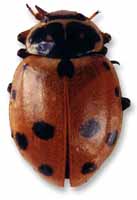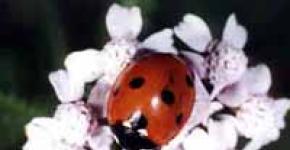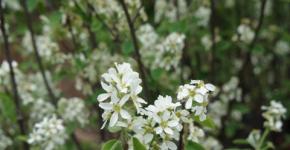Yellow ladybugs with white spots. Yellow ladybug
Ladybugs (Coccinellidae)
Beetles are easily recognizable in appearance - the body is hemispherical, usually short oval, convex above, flat below, legs short. The antennae are small with a small mace at the end. The color of the beetles is typical, in which round spots or stripes are scattered over a bright, rarely black background. In the fauna of Baikal Siberia, there are about 75 species, in the world fauna more than 4000 species of ladybirds are known.
Why did these bugs get such a strange name? Obviously, because there are cows of different colors, with dark and light spots. But the "God" - because these beetles give the impression of harmless creatures: they do not sting, do not bite and, only when captured, release a yellow "milk". Bright coloring of ladybugs warns of their inedibility. Ladybugs are successfully used in biological warfare. The main food of ladybugs is aphids, leaf flies, coccids, which deplete plants, sucking out juices and polluting leaf stomata with their secretions. Cows laying eggs attach them to the places of accumulation of sucking insects, and the emerging larvae immediately attack the prey.
One of the most interesting aspects of the biology of ladybugs is their seasonal migration and mass accumulations of beetles in wintering places. Some cows form clusters in autumn on rocky slopes, walls of buildings, gradually climb into crevices and winter there. During the migrations of bugs, the rocks and walls of the houses are completely dotted with bugs. The reasons for the formation of clusters of cows are not fully understood.
Some species live mainly on trees, others on grasses, and others on vegetation of any type. In the crowns of trees, a common ladybug harmony (Harmonia axyridis) with a very variable pattern. Elytra yellow or orange, with 19 black spots that partially disappear or merge, forming a band. In light forms, pronotum with an M-shaped dark spot in the middle. Body length 7.4-8.2 mm. The body of the larvae is dark colored with a yellow or red pattern and carries branched outgrowths. Pupa orange-red with black spots, attached to plants by the rear end of the body.
In deciduous and coniferous forests eye ladybug (Anatis ocellata). Elytra brown, each with 10 elongated spots, bordered by light rims, often the spots merge into longitudinal stripes, or sometimes disappear. Pronot brown with large black spots. Body length 7.5-9.0 mm. Pupa spotted, bright, with serrated outgrowths on sides of abdomen. In the same places dwells three-lane ladybug (Coccinella trifasciata). Pronotum black, in anterior corner with triangular whitish-yellow spot. Elytra yellow, orange-red or red, with three broad black transverse stripes. Body length 4.0-5.6 mm. Red-headed pupa with black spots. On woody and shrubby vegetation, as well as in meadows in large numbers seven-point ladybug (Coccinella septempunctata). Pronotum black with small yellow spots at anterior angles. Scutellum black, elytra red with 7 black dots. Body length 5.2-7.0 mm.
|
|
|
Seven-spotted ladybug (Coccinella septempunctata) |
Common in herbs changeable ladybug (Adonia variegata). Pronotum black with yellow lateral margins and usually with 2 spots in the center. Elytra yellowish, each with 6 black dots and one common point at the scutellum. Points can merge or disappear. Bottom of the body is black, legs are brownish-yellow, hips are dark. Length 3.0-5.5 mm. The larva is blue-black, with red spots, covered with spiked warts.
|
|
|
|
Variable Cow (Adonia variegata) |
Changeable Larva |
Seven-spotted cow (Hippodamia septemmaculata) is common in wet meadows. The head is black, with large yellow spots on the leading edge. Pronotum black with yellow edges. Elytra orange or yellow with a large common spot at the scutellum and 3 or 5 black spots. Bottom of the body and legs are black, legs are brown. Body length 5.0-7.8 mm.Mannerheim Cow(Coccinella hieroglyphica mannerheimi) is less common. The head is black with 2 small yellow spots on the forehead and near the eyes. The pronotum is black with 2 yellow spots on the front corners and a narrow strip on the sides. Elytra yellow-brown with 2 black transverse bandages. The bottom of the body is black. Body length 3.5-5.0 mm.
Everyone knows such an insect as a ladybug. Each of us held this beetle in the palm of our hands and, with curiosity, counted the number of points on its back. Remember how in childhood we thought how many points were for so many years and to the ladybug, how they sang rhymes, begging them to fly to heaven ... The insect ladybug evokes joyful and enthusiastic memories from childhood. Below you will find a photo and description of a ladybug, you can learn a lot of new and unusual about her.
Ladybug looks very small. The sizes of the ladybug reach a length of 4 to 9 mm. Ladybug looks recognizable, because most often it is painted in red and strewn with black dots. The ladybug has a convex, almost round body. Ladybug looks interesting, because in the structure of her body there are so many small details.
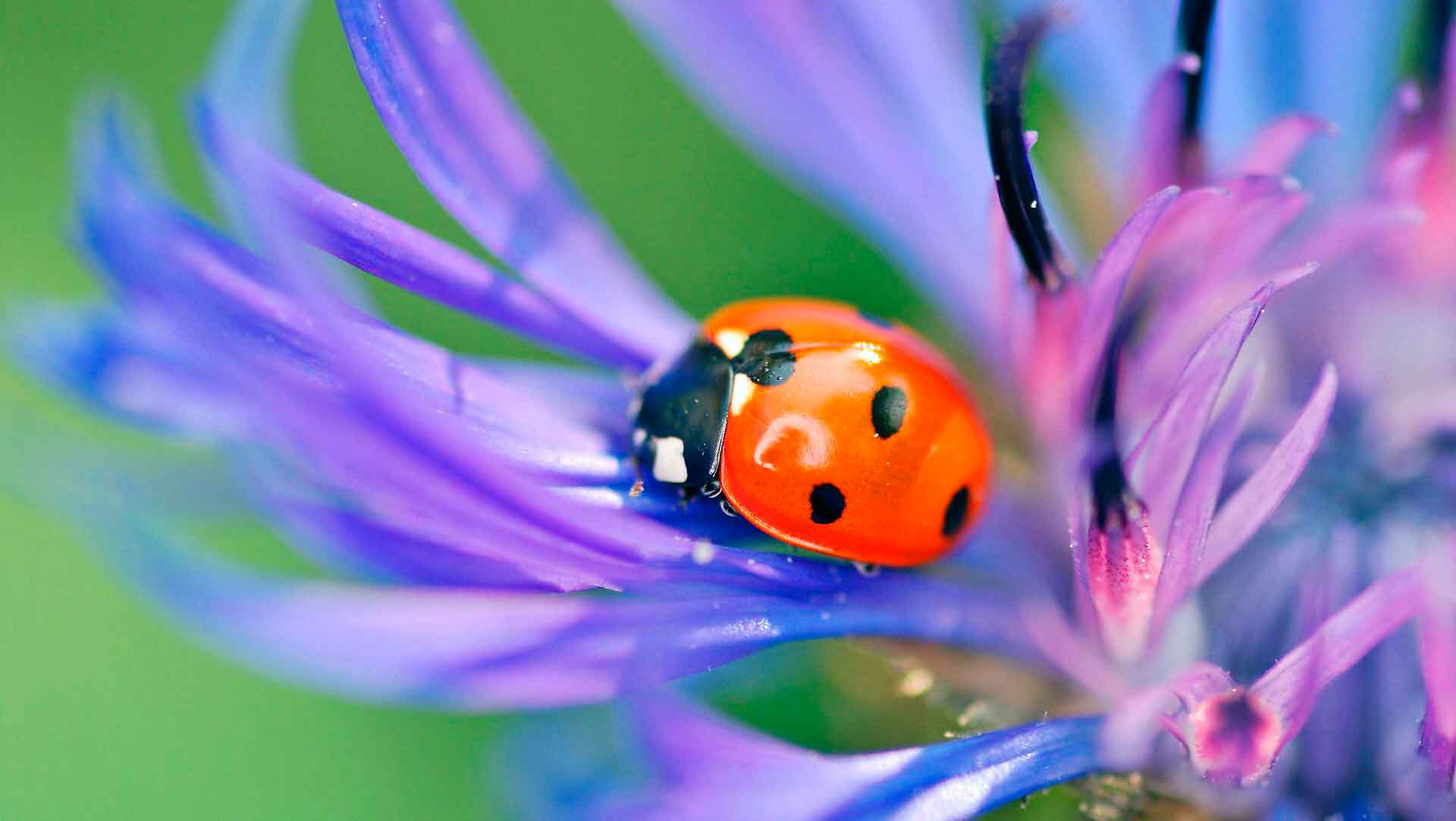
The insect ladybug has a head, pronotum, chest, abdomen, wings with elytra and legs. The ladybug has a small and short head, which is motionlessly connected to the pronotum. On the head of the insect are eyes and a moving antennae. A ladybug beetle flies with a pair of hind wings. The front wings of a ladybug are stiff elytra that protect the main wings while it is on the ground. The ladybug flies well and wings up to 85 flashes per second.
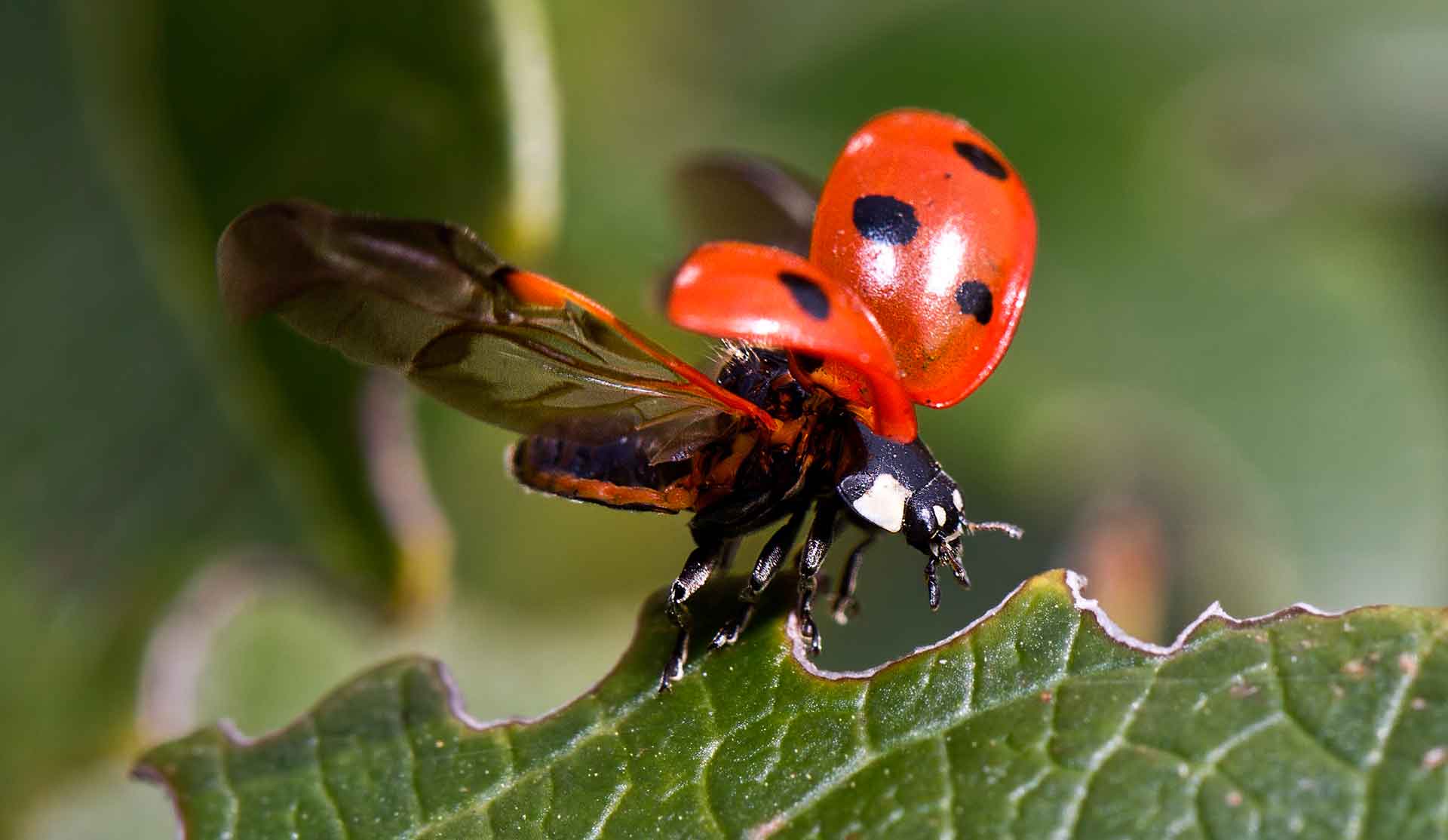
Everyone knows that a ladybug looks so bright to scare away predators. In addition to the colorful colors, the ladybug also emits a yellow liquid with a sharp specific smell. This liquid is poisonous and serves as protection against frogs, spiders and other potential enemies. The ladybug releases its poisonous liquid from the joints of the legs in case of danger. Also, in danger, the insect can even pretend to be dead.
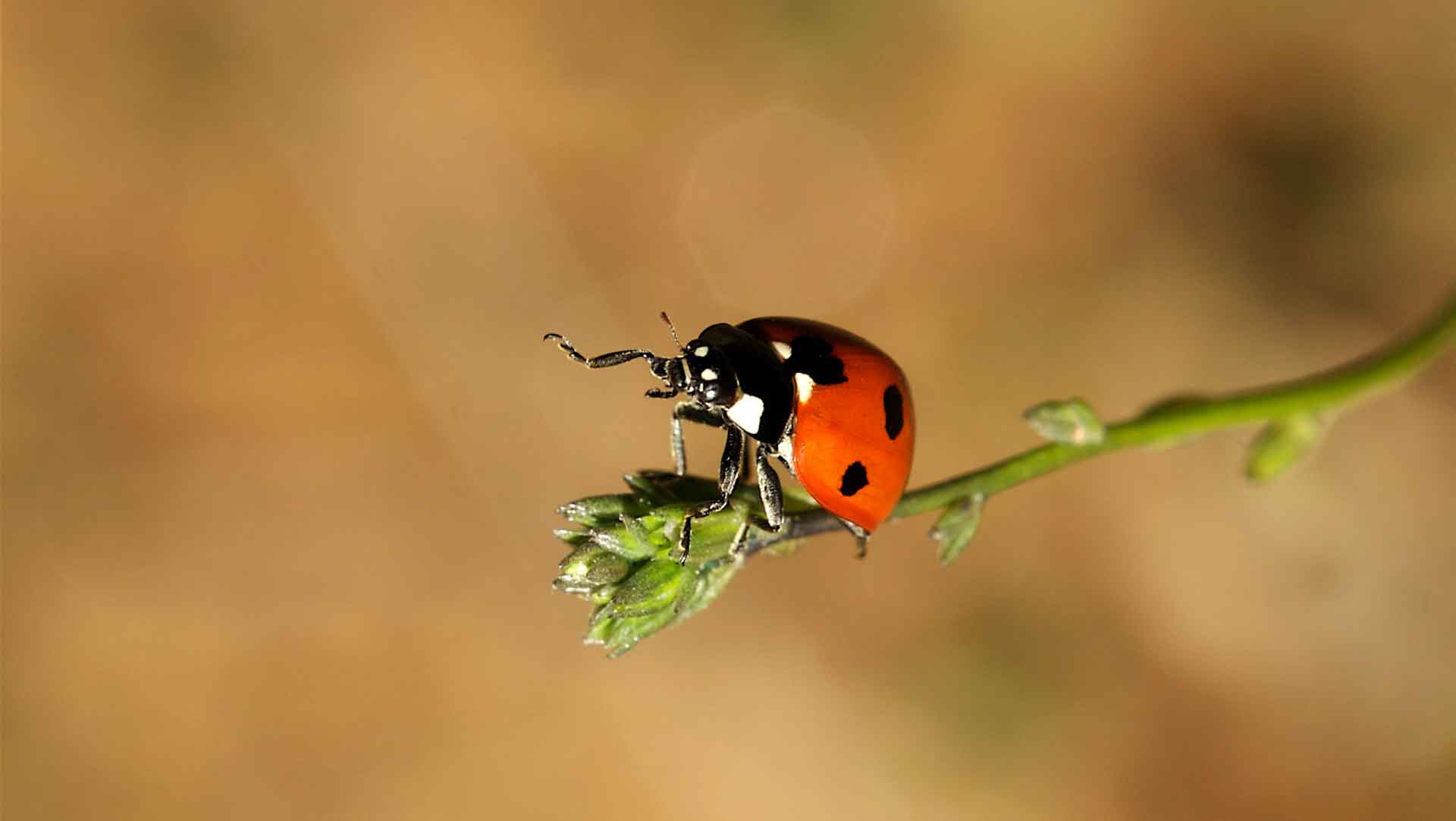
Of course, a red ladybug is not the only color scheme for this insect. There is a yellow ladybug, a black ladybug and even a white ladybug. How a ladybug looks and what color it will be depends on the type of ladybug. At the same time, young individuals have the most saturated color, in older adults it fades over time.

Types of ladybugs are very diverse. All of them have different shapes, sizes, colors and number of dots. There are even ladybugs without dots. More than four thousand species of ladybugs are known, which are combined in 360 genera and distributed in almost all parts of the world.

The most famous and widespread type of ladybugs that we are most familiar with is the seven-point ladybug. It has the usual red color for us, and is named so because it has exactly 7 black dots. Below in the photo you can see various types of ladybugs.

Where does the ladybug live?
Ladybug lives almost everywhere except the Arctic and Antarctic. Ladybug lives on trees, shrubs and grass in different parts of the world. Most often, the ladybug lives in the steppe zone, forests, mountains and gardens. In Russia, the ladybug lives on almost the entire territory, with the exception of the extreme northern regions. Also, the ladybug lives in Europe, Asia, Japan, China, India, Mongolia, Africa, Korea and America.

How does a ladybug live?
Ladybug lives, showing activity from early spring to late autumn. In winter, ladybugs hide under fallen leaves, tree bark or stones, where they remain until spring. But not all ladybugs live settled and remain wintering where they spent the summer. Often, before the onset of cold weather, ladybugs make flights.
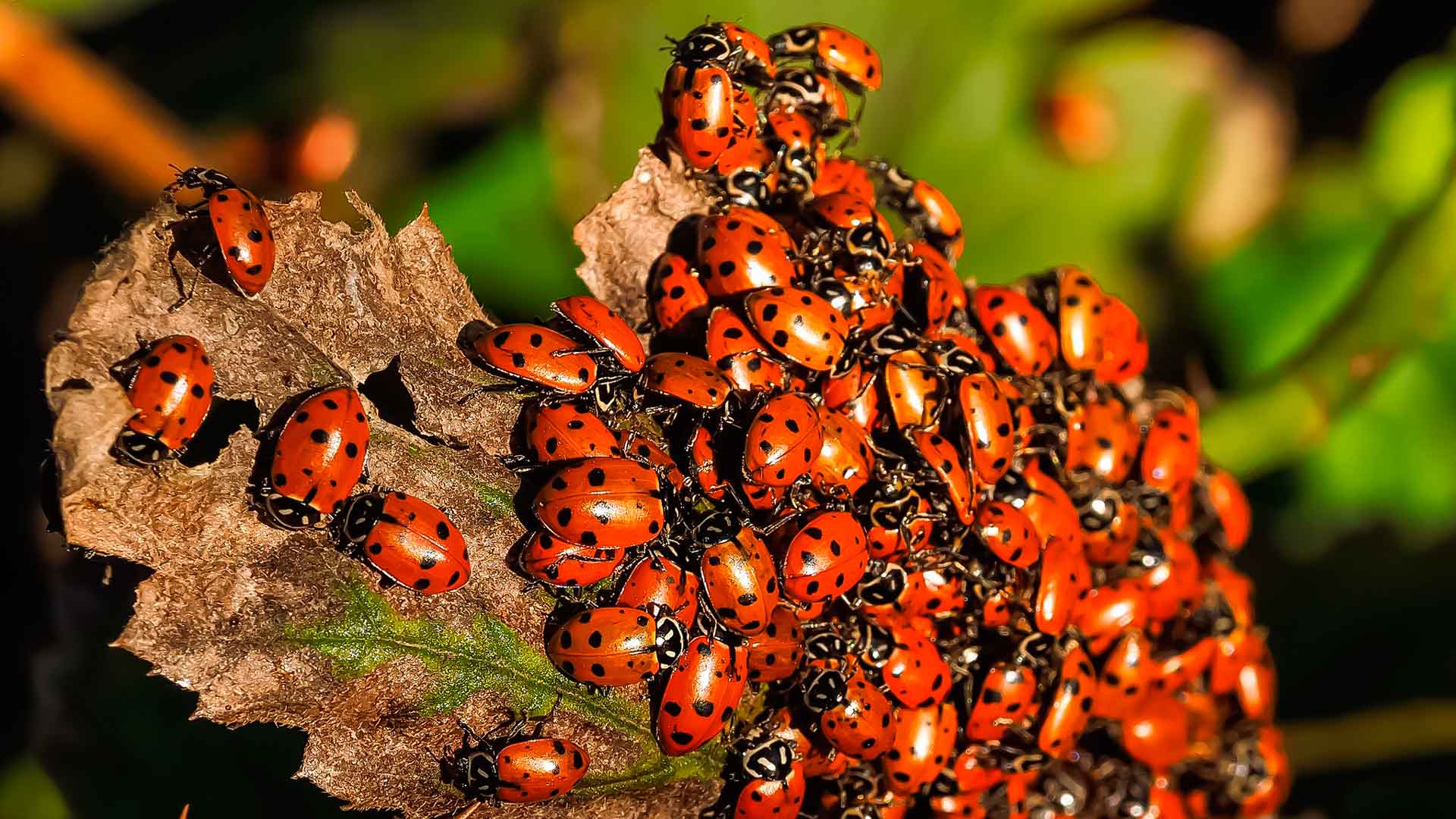
During periods of wintering and flights, ladybugs, usually leading a solitary lifestyle, come together. Also, massive accumulations of this beetle are characteristic during the mating season. In the spring, a ladybug wakes up very early, it is enough for her that the temperature reaches only +10 ° С. Therefore, a ladybug can be seen one of the first after winter. Ladybugs live from 10 to 12 months and only occasionally up to 2 years. The life span of a ladybug depends on the availability of food.

Likely for each of us it will be a great discovery that most of the ladybugs are predators. Because ladybugs eat aphids. On a day, a ladybug eats about a hundred aphids. In addition, ladybugs eat leaf flies, scutes, ticks and worms. The ladybug larva is also predatory. Both the ladybug and its larva are very voracious.
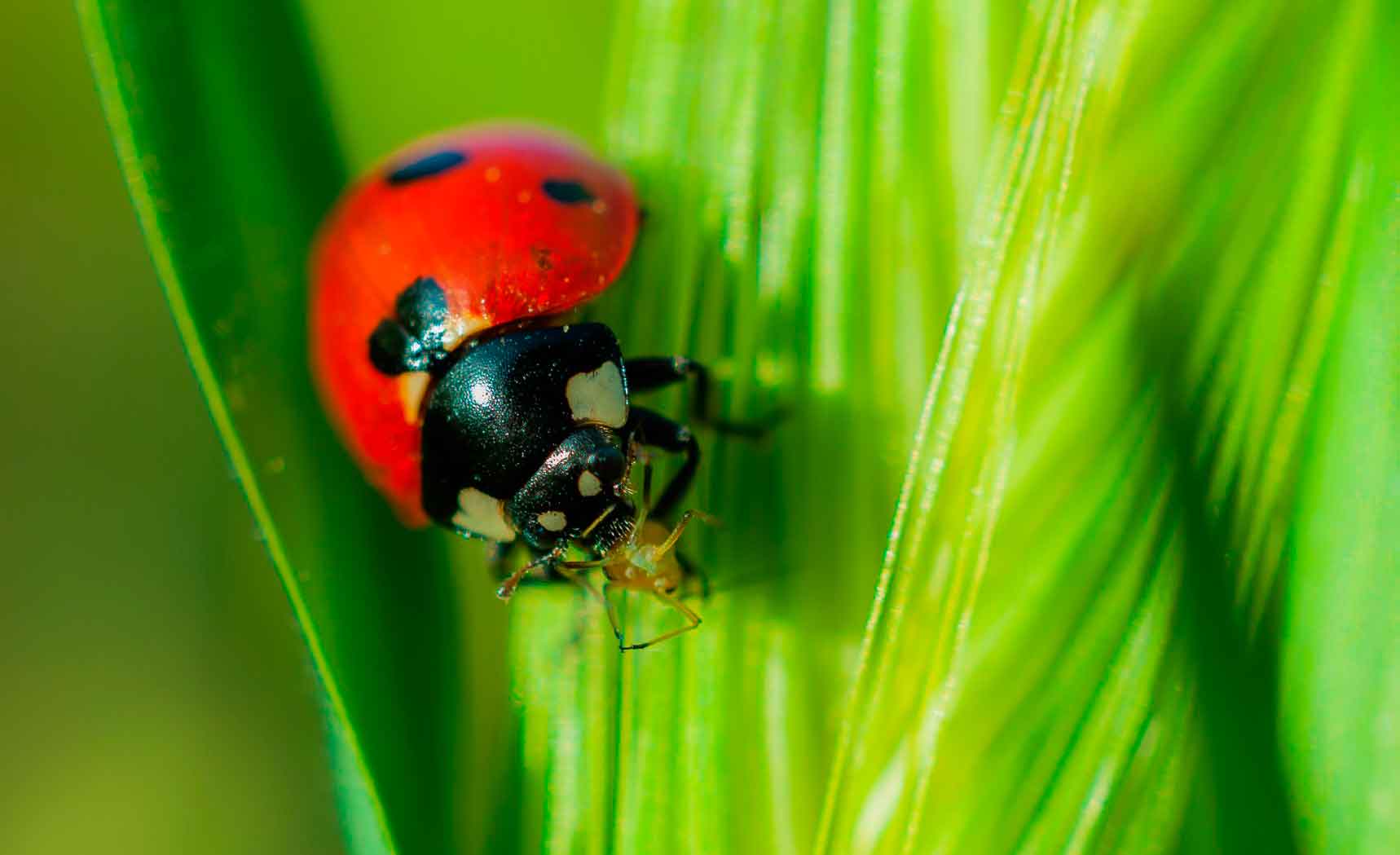
The insect ladybug in large quantities destroys various dangerous pests, which is of great benefit to agriculture. The seven-point cow was even specially brought to America to combat spider mites and aphids.
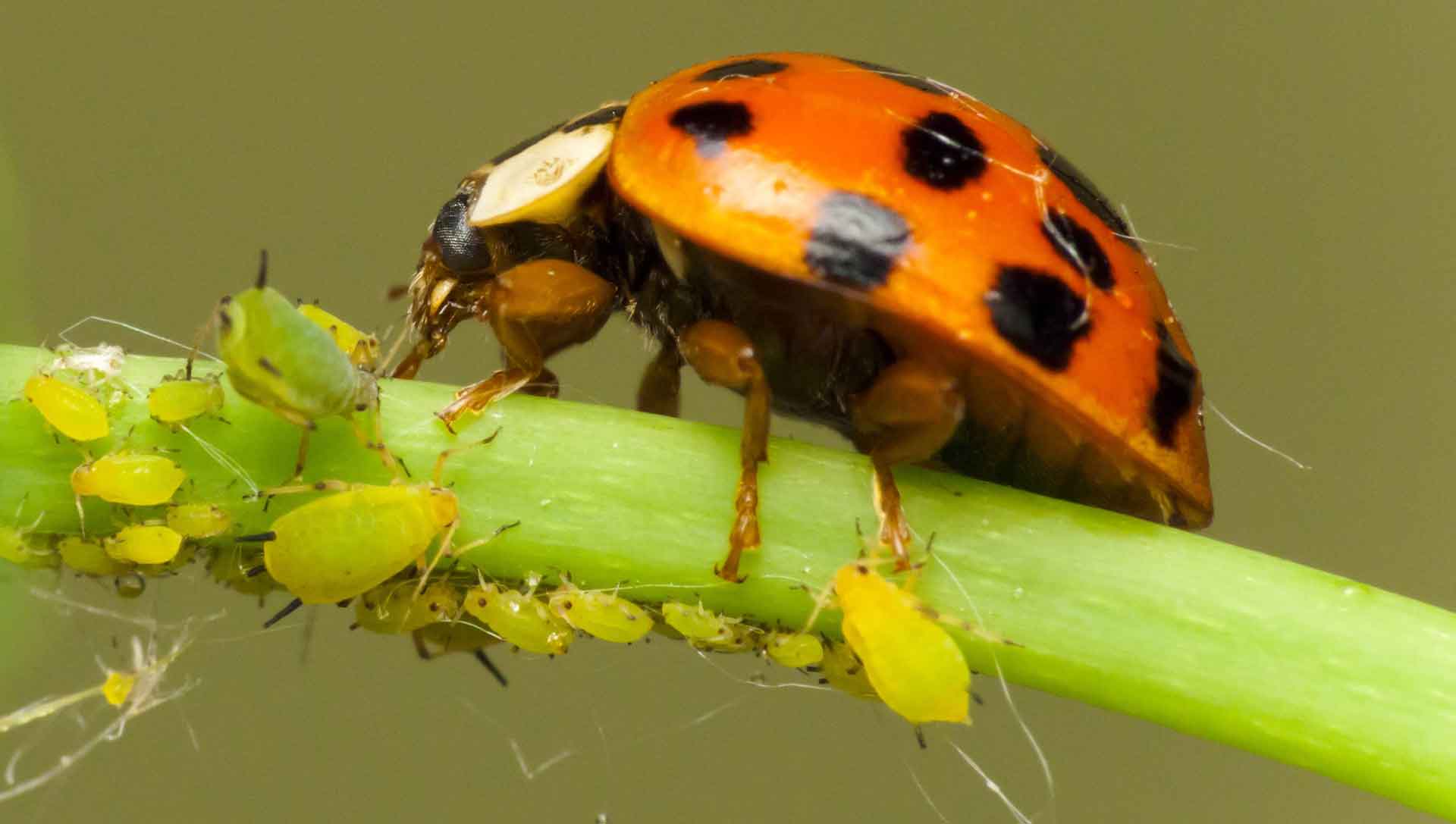
Of course, there are herbivorous species of ladybugs. These ladybugs feed on plants and harm agriculture. Herbivorous ladybugs are most common in the tropics of all continents and subtropics of Southeast Asia.

In Russia, there are 3 species of ladybugs that feed on plants. Potato, tomato, cucumber and other vegetable crops are harmed by a 28-point ladybug, an alfalfa ladybug damages sugar beets and alfalfa, and a kidneyless ladybug harms a clover and sweet clover. All other types of ladybugs that live in Russia are predators.
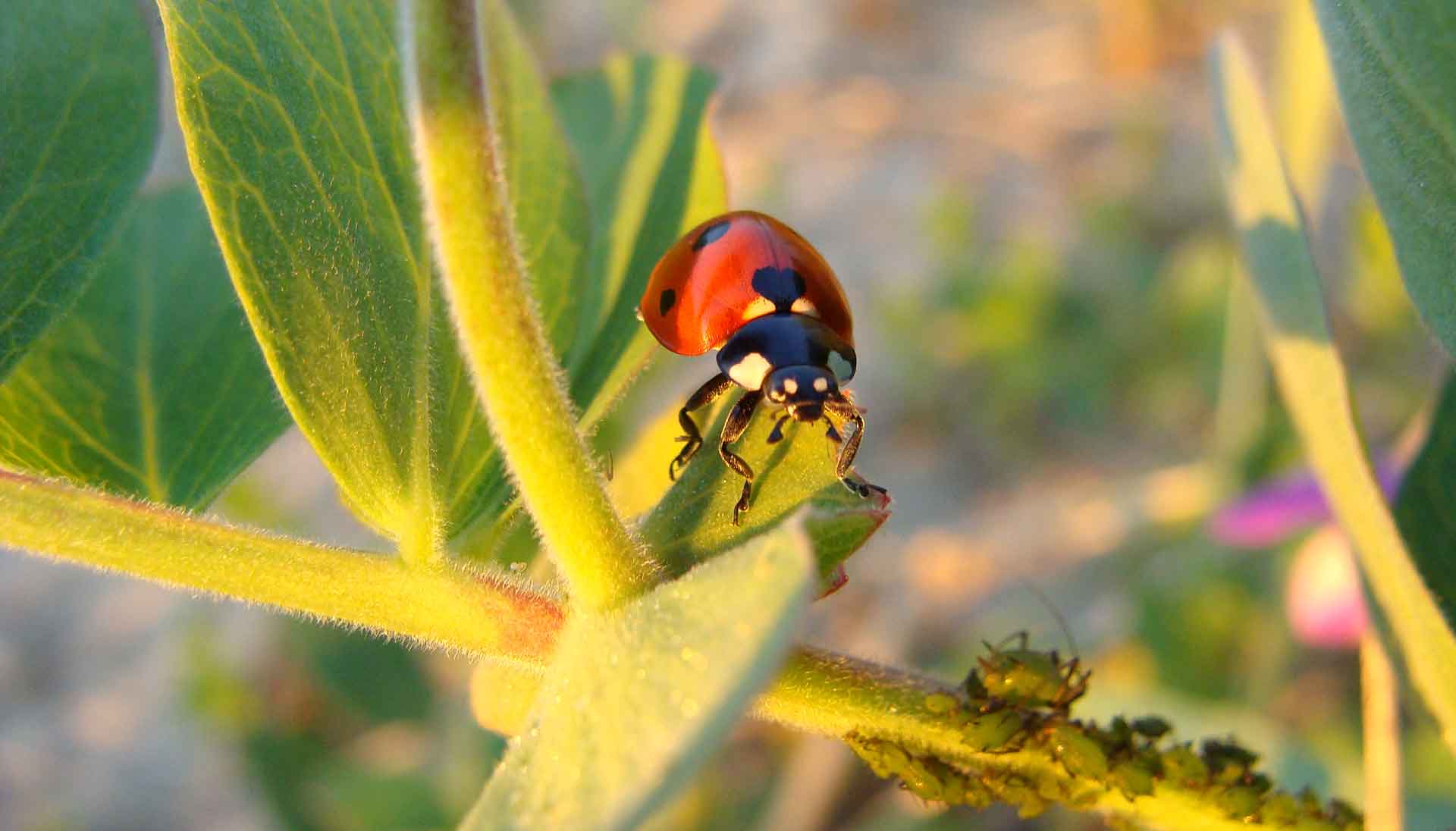
Ladybug larva
The mating season of ladybugs falls in the middle of spring, when insects have already gained strength after hibernation or flight. During the breeding season, the female secrets a special secret, according to which the male finds it. After which the female lays eggs on the plants. The ladybug chooses a place closer to the aphid colonies so that the offspring are provided with food.
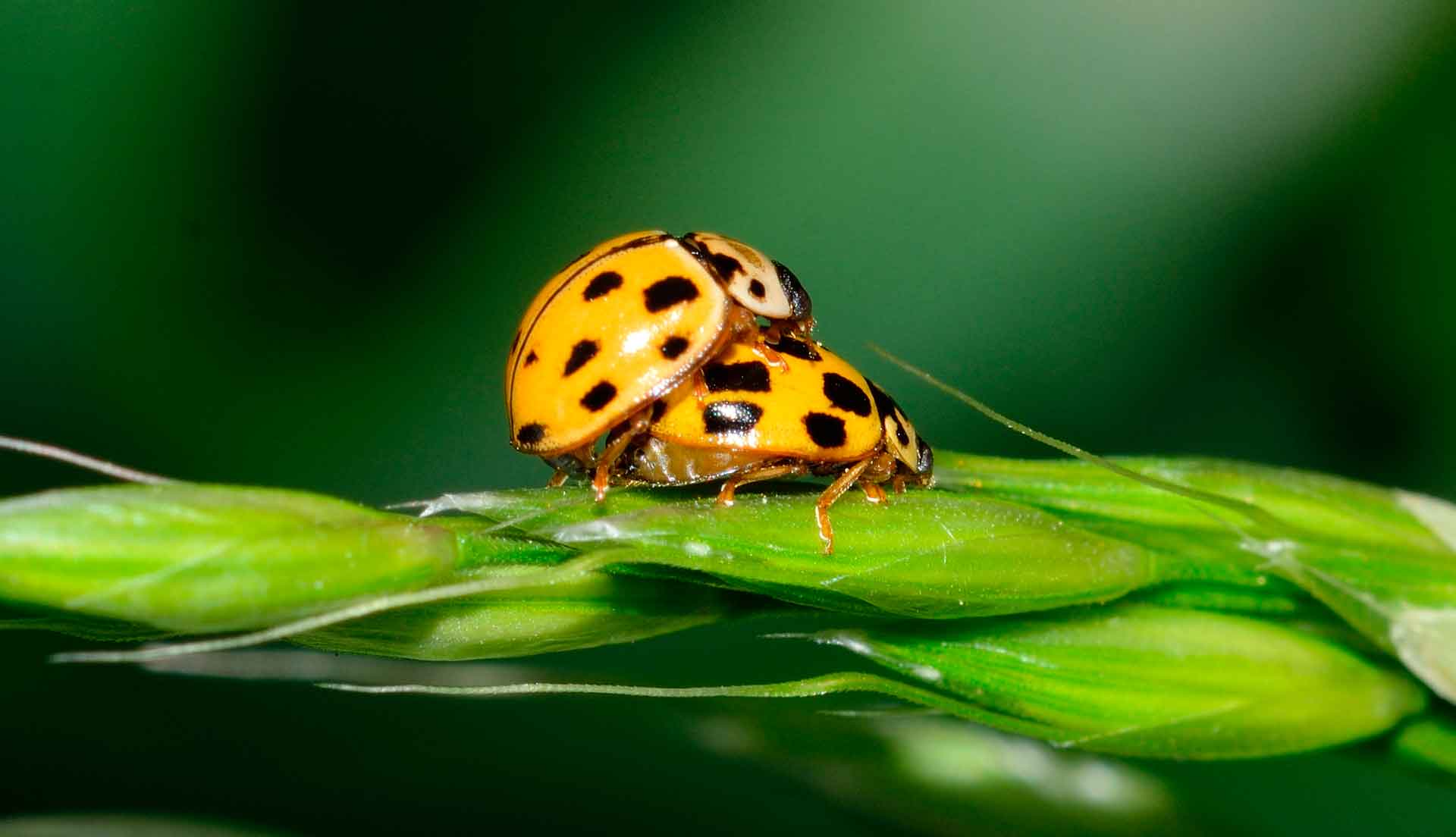
Ladybug eggs are similar to pointed oval-shaped kernels and can be painted yellow, orange or white. The female lays them on the underside of the leaves or stems of the plant. One ladybug can lay up to 400 eggs, placing them in small heaps. If a female eats well, then she is able to lay up to 1 thousand eggs.

After about a couple of weeks, mottled oval ladybugs with a bluish-gray hue appear from the laid eggs. The ladybug larva has thin bristles on the body and a peculiar pattern, which is formed by a combination of orange, yellow and white spots. Hatching, the ladybug larva eats the shell of its egg and dead eggs. When the larva grows stronger, it begins to destroy aphid colonies. A gluttonous ladybug larva eats up to 300 aphids a day.

The ladybug will be in the larval stage for about 4-7 weeks. All this time, the ladybug larva is very mobile, because it is in a constant search for food. Then the ladybug larva turns into a chrysalis and attaches to the plant. Developing, it begins to acquire all the characteristic signs of a full-fledged insect. After about 10 days, a fully formed adult emerges from the cocoon.
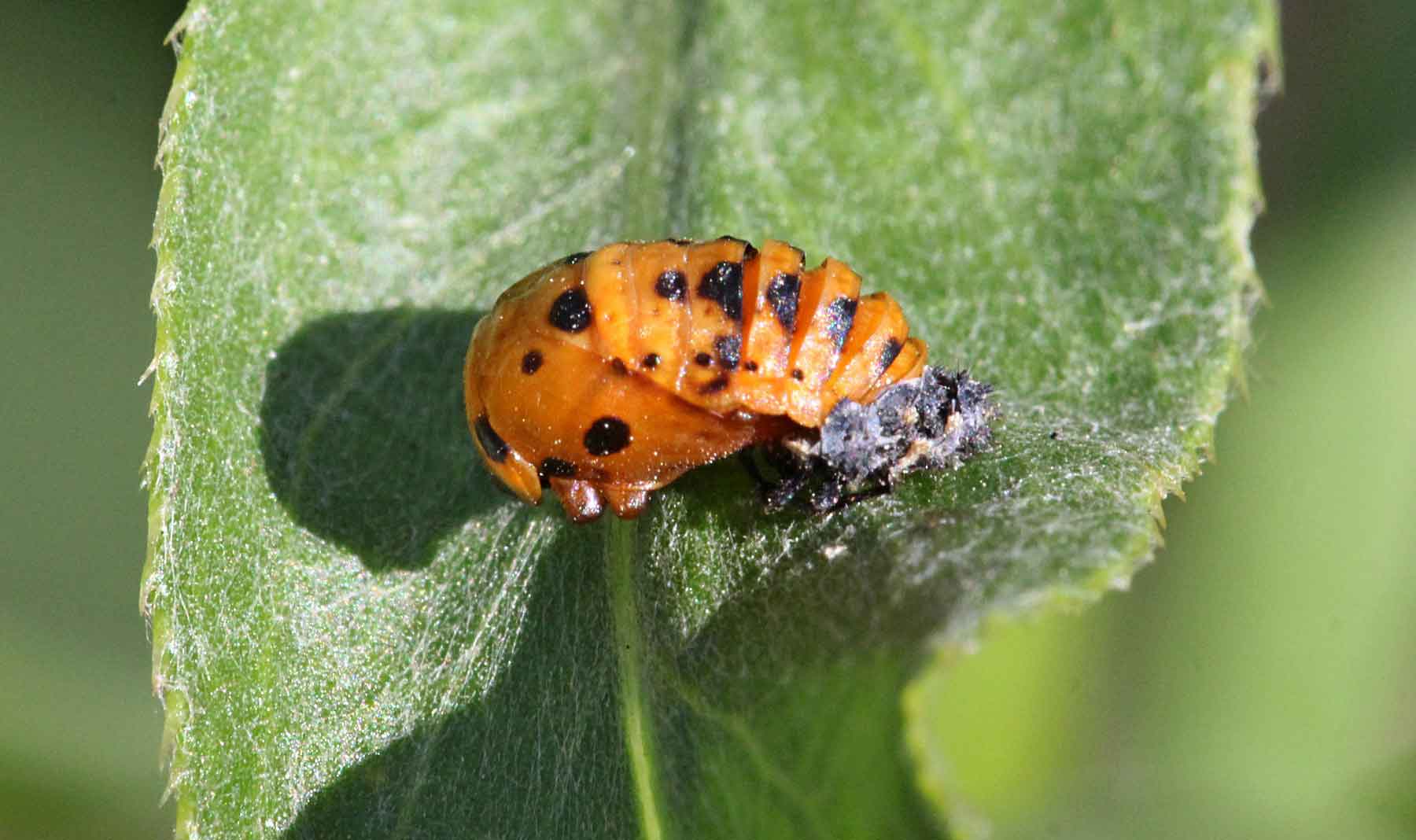
It still remains a mystery why the ladybug is so called. Perhaps it was so named because the insect ladybug is able to secrete “milk” - a yellow poisonous liquid that scares off enemies. And “God’s" she was probably nicknamed for her harmless character and help in preserving the crop by destroying aphids.
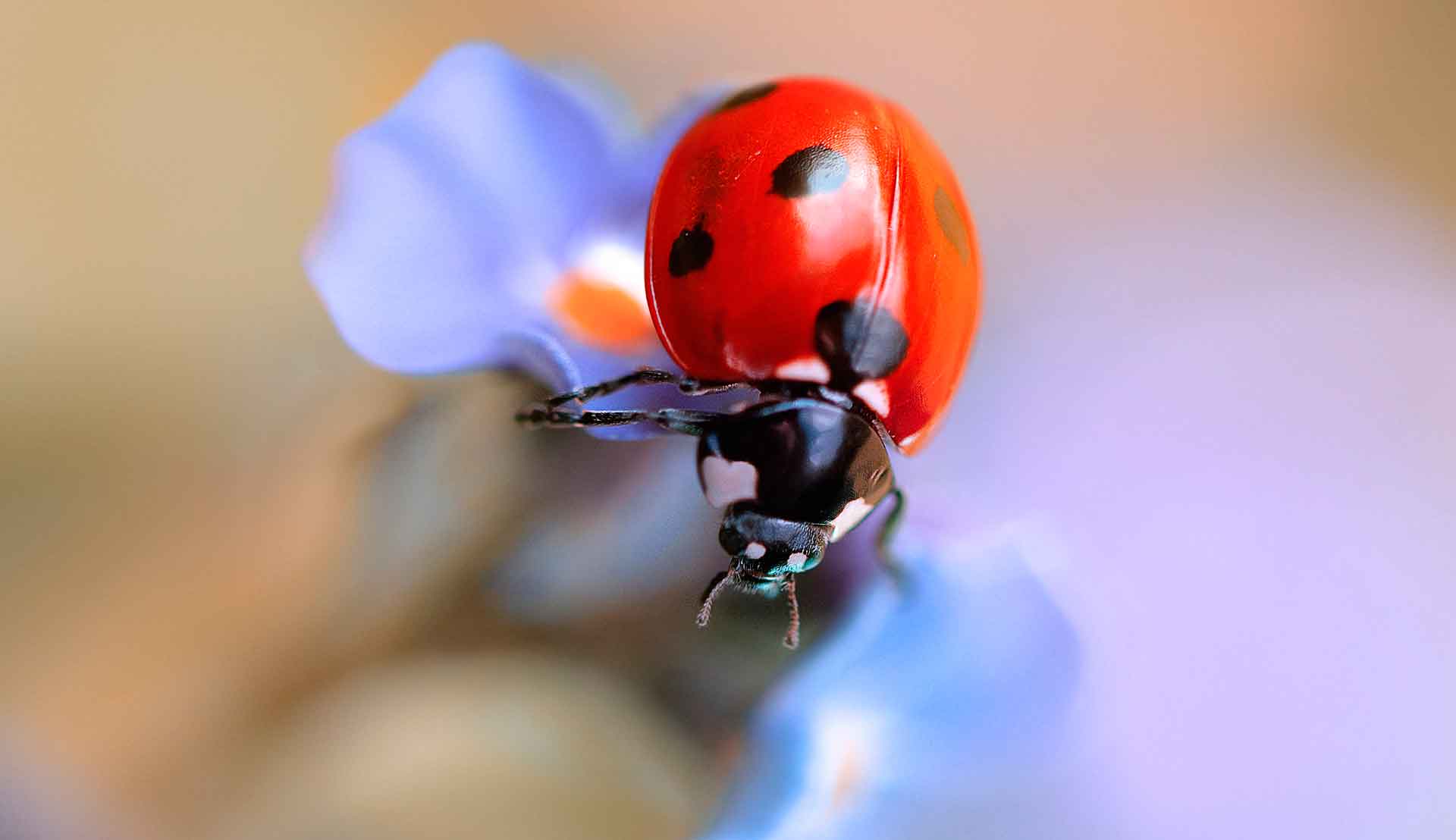
The insect ladybug around the world enjoys great sympathy and respect. In different countries, the ladybug is called differently. In Germany, Austria and Switzerland, the ladybug is called the “bug of the Holy Virgin Mary”. In England, the USA and Australia - the "lady bug". In Latin America - "St. Anthony's Cow". In the Czech Republic, Slovakia, Belarus and Ukraine it is called the "sun". In some countries, monuments have even been erected in honor of the ladybug.
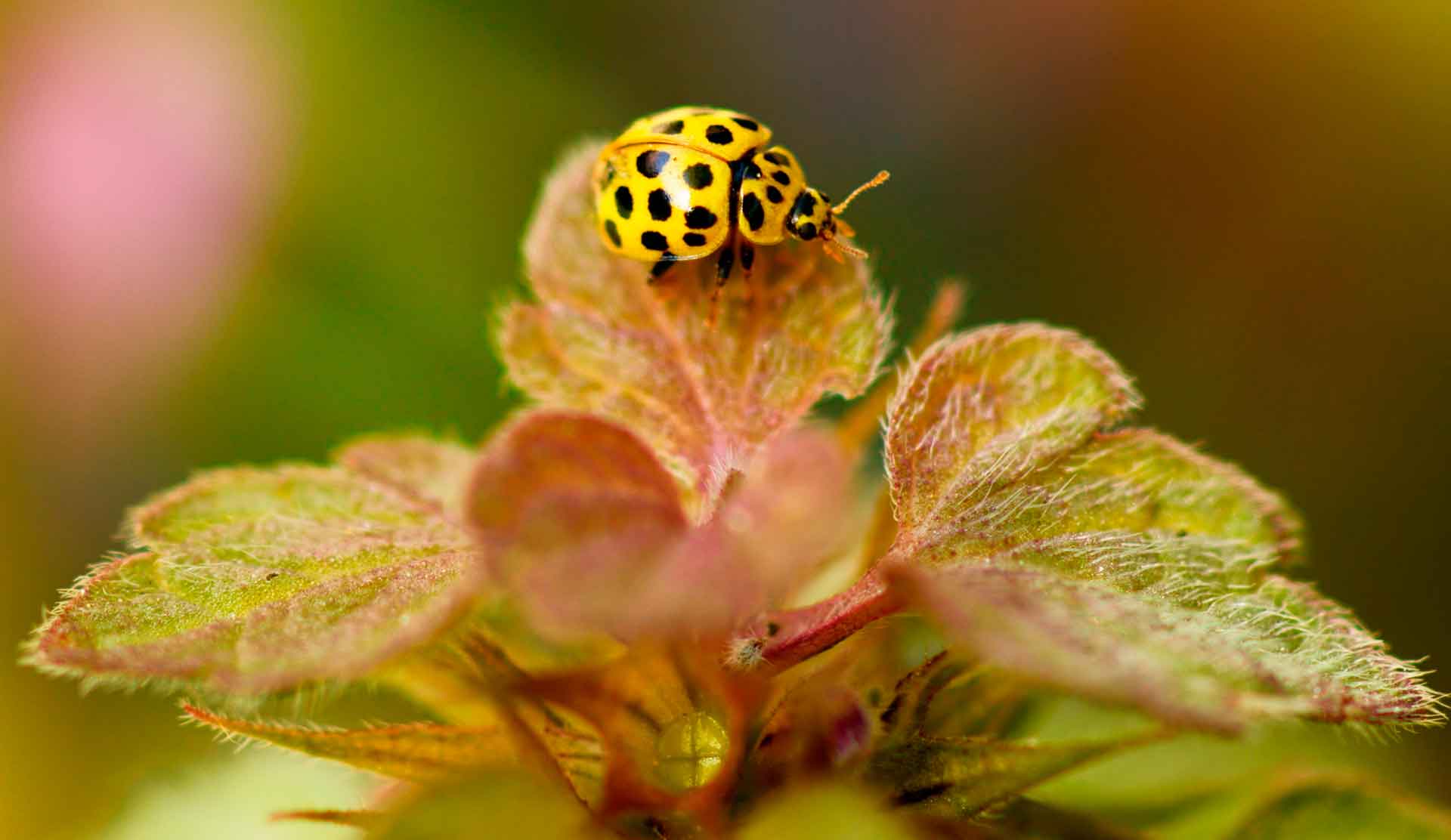
Around this insect there are many beliefs and signs that portend only good events. With the participation of a ladybug, there are many legends. Ladybug is considered a symbol of good luck, in ancient times people worshiped this insect and idolized it. The image of this beetle on clothes or various jewelry was considered a talisman. In some cultures, it is forbidden to harm this insect so as not to attract disaster.
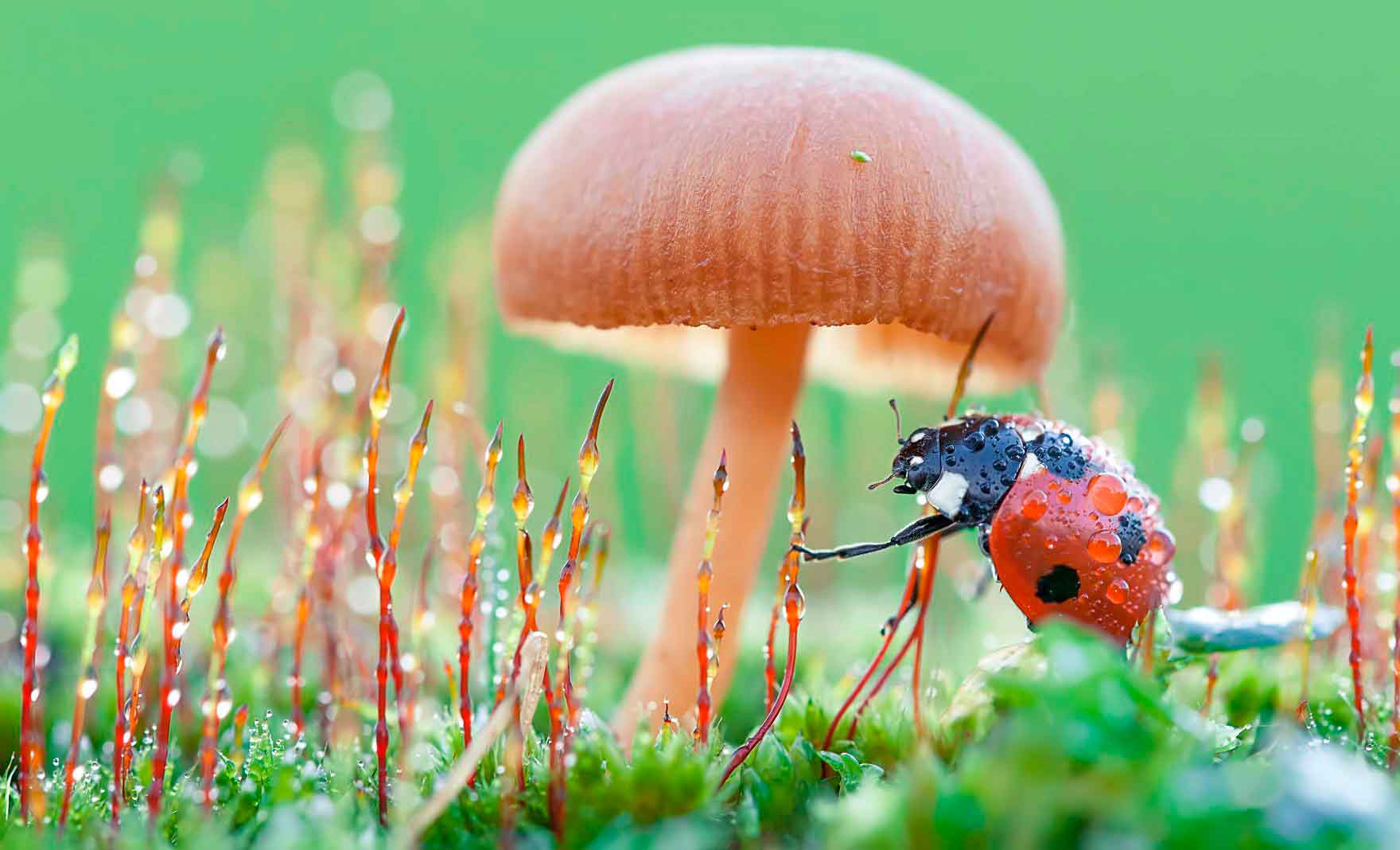
The ancient Slavs considered the ladybug a messenger of the sun goddess. It is believed that you can not drive away the ladybug that sat on you so as not to frighten away the fortune. If it flew into the house, it brings peace and harmony into it. Even the weather was predicted with its help. Here is such a universal love that this amazing and tiny insect with the simple name of a ladybug has.

If you liked this article and you like to read about animals, subscribe to site updates to get the latest and most interesting articles about animals first.
We offer you a photo selection of unusually beautiful insects - ladybugs




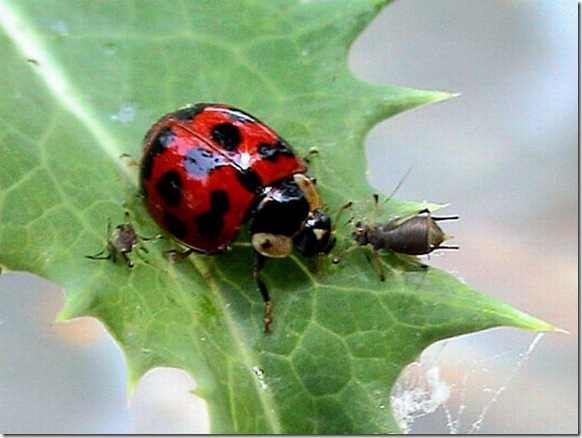

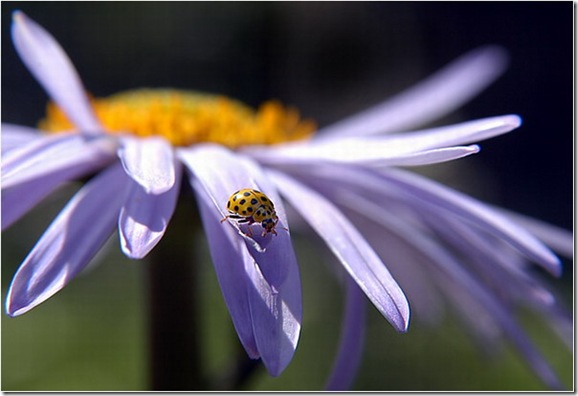
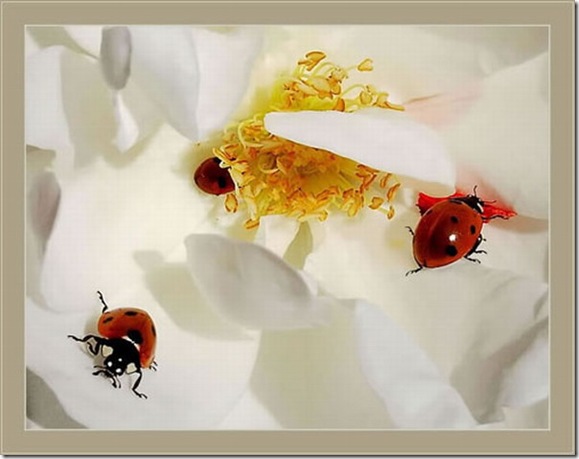
There are many types of ladybugs. The most common ladybug is seven-spotted or seven-spotted. The seven-spotted ladybug, like many other species of ladybugs, is an insatiable predator, feeding on (both larva and adult) aphids, mealybugs, whiteflies, and sometimes other insects in the garden. Some types of ladybugs are used in greenhouses to control mealybugs and whiteflies on affected plants. Most species of ladybugs, with rare exceptions, are beneficial.
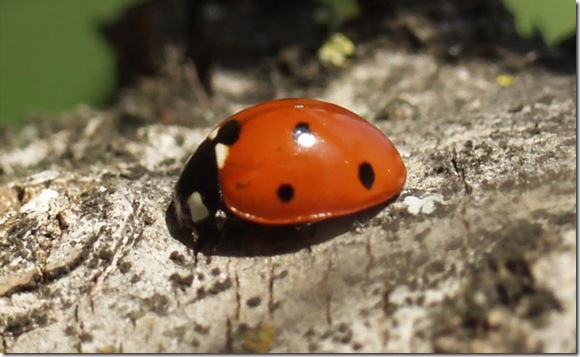
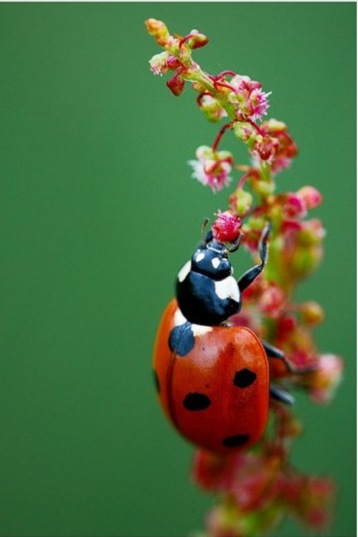
The bright colors of ladybugs - red or yellow with black dots - have a protective function, warning predators, such as insectivorous birds, that ladybirds have a very unpleasant taste. If you touch a ladybug, it will release a drop of bitter, caustic fluid from the foot joints and other parts of the body. This liquid, usually yellow in color, stains the hand and leaves an unpleasant odor on the skin for a long time.
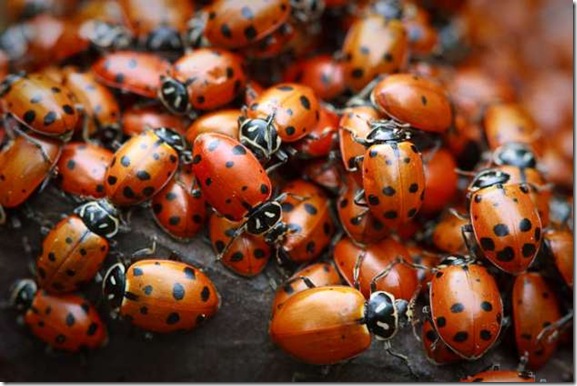
Ladybugs feeding on aphids are active in spring and summer, especially on warm days, they are in a constant search for prey. Females lay orange-yellow eggs in small groups, usually on the reverse side of plant leaves affected by aphids or young pests - ready-made food for ladybugs hatching from eggs. Ladybug larvae are gray-blue or black with several noticeable yellow or white spots on some segments of the body. They have long legs, they are active in obtaining food all day, eagerly exterminating aphids and other insect pests. 

Adult ladybugs are more voracious than their larvae: even a small number of ladybugs are able to bring significant benefits in the garden: to limit (control) the reproduction of harmful insects in it.
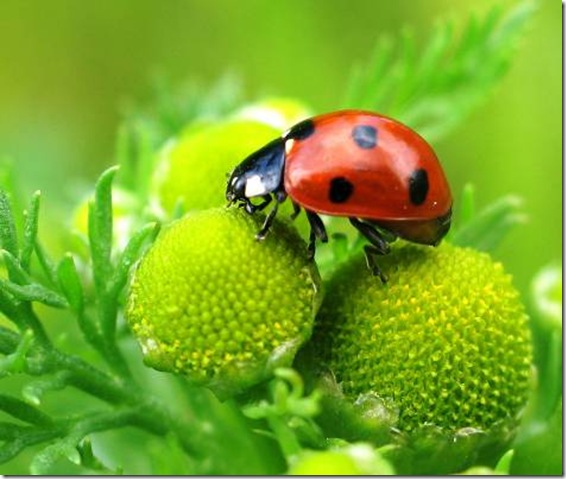
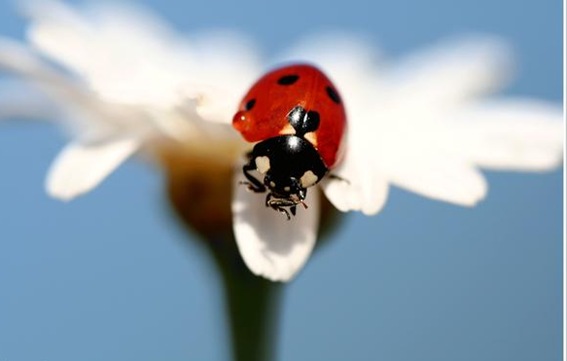
For wintering, ladybugs prefer secluded places among dense vegetation, leaf litter, under the bark of dry trees or indoors, sheds, sheds. They often fly into houses, nest between doors, double window frames, in the folds of curtains. If you find such wintering ladybugs, remember their benefits, their future role in reducing the number of harmful insects in the garden - it takes very little time to put ladybugs in a jar and take them to the garden shed, shift them down to the fence or other secluded place, where they can end their hibernation. Some ladybugs became flocking, hibernating together, in large groups, sometimes several hundred individuals. The meaning of this behavior is not known, but it certainly provides a colorful look.
All other Russian species of ladybugs are predators. In Russia, there are 3 types of phytophage cows. In southern Russia, alfalfa (Subcoccinella vigintiquatuorpunctata) sometimes damages alfalfa and sugar beet plantings. Larva and adult ladybug. The killing of a ladybug is prohibited in a number of cultures. In English-speaking countries, a ladybug is called a ladybird, ladybug or lady beetle.
Herbivorous species are most widely represented in the tropics of all continents and in the subtropics of Southeast Asia. Among them, there are several important pests of agriculture. Beetles and larvae are very voracious and, destroying large quantities of such dangerous pests as aphids, leaf flies, mealybugs, scale insects and ticks, bring enormous benefits to agriculture.
The word Lady, uniting these names, means the Virgin Mary, respectively, the ladybug in the Catholic countries is considered the insect of the Mother of God (cf. German Marienkäfer, Spanish. Mariquita). The most common version of the name of the ladybug indicates cattle belonging to a god or some divine character: Rus. ladybug, polish.
Ladybug or beetle of the virgin mary
This is evidenced by the names of coccinellids in different countries - always respectful and affectionate. Vaquita de San Antonio (St. Anthony's Cow) - in Argentina. Slunecko (sun) - in the Czech Republic and Slovakia. Sonechko (sun) - in Ukraine and Belarus. Ladybug, fly to heaven, bring me bread. Black and white, Just not burnt. If the ladybird flies away, then she believes. In Denmark, children ask the Ladybug to ask God for good morning weather.

Why does a ladybug need such a bright outfit?
In Smolensk, Saratov, and other areas of the middle zone and southern Russia, alfalfa, clover, and clover cloverfish (Cynegetis impunctata) are occasionally damaged.
It turned out that in Australia, the worm has an enemy - a ladybug called Rodolia (Rodolia cardinalis). Now, without any exaggeration, we can say that the very existence of citrus fruits, as a culture, is obliged to this cow. The effect was the same as everywhere else - the ladybug quickly dealt with the worm, saved not only citrus fruits, but also the “mimosa”, which was presented to women on March 8.
Groups and types of ladybugs
For wintering, ladybugs are looking for secluded places among dense vegetation, leaf litter, under the bark of dry trees, etc. Some ladybugs became flocking, hibernating together, in large groups, sometimes several hundred individuals.
How to bring a ladybug to your garden?
Of course you can just catch ladybugs and let them out in the garden. It is best to catch the larvae of ladybugs, because they are more gluttonous. But still, so that you do not have to make such traps every time you are attacked by harmful insects, you need to take care of the bait of ladybirds on your site. For example, plant a red elderberry - where there are a lot of aphids, the larvae of ladybugs and other beneficial insects will be preserved there.
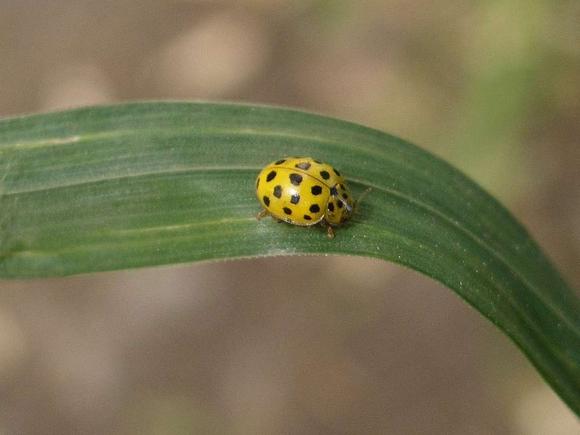
For a better result, the housing provided should attract ladybugs to stay and breed in the garden. Nectar, pollen, honey dew stimulate their reproductive process. If there is little food, adult insects can disperse and fly to other places. Therefore, ladybugs can be fed by spraying Wheast on plants. Wheast provides all the necessary nutrients for the growth and reproduction of ladybirds, lacewings and other beneficial insects.
![]()
A very interesting article, I’ll take note that ladybugs can be fed not only aphids))) If there were even fewer mistakes (such as “feramonnyh”), then it’s very cool.
The main method of dealing with a 28-point cow is chemical. Most of us are accustomed to the traditional coloring of ladybugs - black spots on a red background. However, there are yellow ladybugs, as well as blue and black with red spots. The bright color warns the enemies of the ladybug (mainly birds) that their potential victim is unpleasant in taste and, perhaps, even poisonous.
All cows are united by a body shape (hemisphere) and a characteristic feature is to excrete a yellowish liquid with a pungent odor from a knee joint in case of fright or in case of danger. This liquid has received the name of the people "milk" - apparently because of this bug and is called "cow." A ladybug, unlike her namesake mammal, cannot be called a vegetarian.
In the United States, cows were bagged and released into aphids. Ladybug gatherers even had maps showing places where insects had accumulated for wintering. Over the course of its life, a single ladybug eats several thousand aphids. It is easy to imagine what invaluable help this gardening insect can bring to gardeners. An even more active ladybug larva is very mobile, resembling a small leech of dark blue color with orange spots.
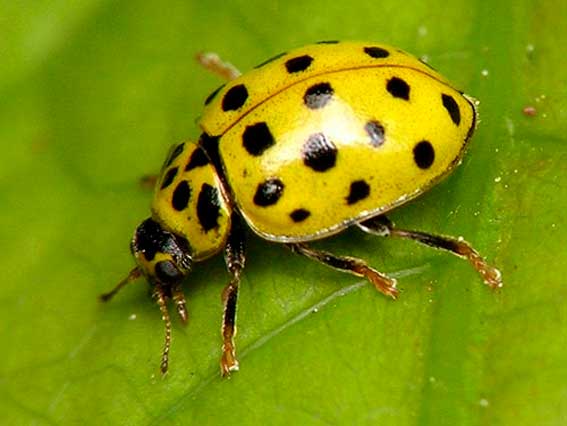
Ladybug in culture [edit edit wiki text]
Having eaten it, the cow begins to make complex zigzags on the plane of the sheet, knowing that aphids always stay crowded. Ladybugs are small insects, well known for their bright color and lack of fear of humans. Most people know the seven-point ladybug, but the species diversity of these insects is huge.
Ladybugs fly well, making wings up to 85 flaps per second. The body of a ladybug is hemispherical or ovoid, more or less convex. Birds and other vertebrates do not hunt ladybugs. Specialists were urgently sent to Egypt to get rid of the pest in Egypt for a ladybug. In children, a ladybug is considered a very trusting creature. It was necessary to check how our climate affects this ladybug.
The Latin name of the ladybug sounds like "coccineus" - it means "scarlet". It was a catchy bright color that served as the basis for such a name.
In different countries this bug is called differently, but each of the names testifies to the people's love and respect for this.
Hispanics call it “St. Anthony’s cow”, Germans and Swiss call it “Virgin Mary’s bug”, Czechs and Slovaks call it “Sunny”, and Russians, Ukrainians and Belarusians call it “Ladybug”. Let's find out what this insect brings to our benefit or harm, where it lives and what it eats.
Description and types
A beautiful beetle with spots on the wings - all the inhabitants of the country are well aware of this insect and have seen them in their gardens and more than a dozen times.
The length of the body of the beetle is from 5 to 8 mm. In our country, the most common ladybug with seven dots on the shell ("Seven-point"). The smart bug got the nickname for seven dark spots on scarlet wings.  Occasionally there are beetles painted unusually:with yellowish wings and dark dots, or black with white spots on the shell, or even without dots.
Occasionally there are beetles painted unusually:with yellowish wings and dark dots, or black with white spots on the shell, or even without dots.
The spots can be more or less than seven, the color of the elytra can also be in several versions. Around the world, there are about five thousand species of ladybugs.
The ladybug eats in nature and shell-like, and than saves gardens and. World insect cows are formidable aphid exterminators, living on the back of garden and leaf plates.
Did you know? In many countries, there is such a direction of agricultural business as raising ladybugs. Farmers are seriously engaged in these beneficial insects, the entire cycle of development of bugs is under strict control. Subsequently, insects are sold to farmers and the bill goes to thousands of individuals in each batch. Aphid hunters are sold both in the country where they were raised and sent by mail around the world.
Life cycle features
Adult members of the family live and hibernate in the open ground, hiding in dry folded leaves or under dried blade of grass. With the onset of heat, it is time to breed offspring and beetles lay a clutch of 10-20 eggs. 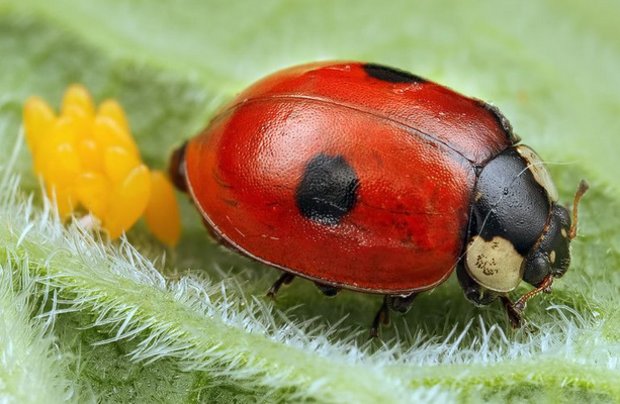 The masonry is attached either to the bark of vertical branches, or on the inner side of the leaf blade, not far from the aphid settlement. From eggs to maturity, insects gradually go through four stages.
The masonry is attached either to the bark of vertical branches, or on the inner side of the leaf blade, not far from the aphid settlement. From eggs to maturity, insects gradually go through four stages.
The larvae of these insects are brown-gray in color, as the pupation time approaches, the color of the cover changes to pale yellow. When a young beetle leaves the pupa, it takes a little time for the elytra to finally turn red.
Larvae, like adults, mainly feed on aphids; this species belongs to predatory insects.Throughout the entire life cycle, the female beetle lays about a thousand eggs, from which, over time, one thousand young bugs hatch, grow and give life to a new generation.From laying eggs to the release of an adult beetle in the summer, 40-60 days pass. The biological significance of a ladybug can hardly be overestimated: only one female beetle destroys up to four thousand aphids throughout its life, thereby saving plants that occupy half a hectare of land from destruction.
Familiar to everyone since childhood, a funny bug with red wings in a small dot in one day can destroy a little more than 150-170 individuals of leaf-sucking aphids. 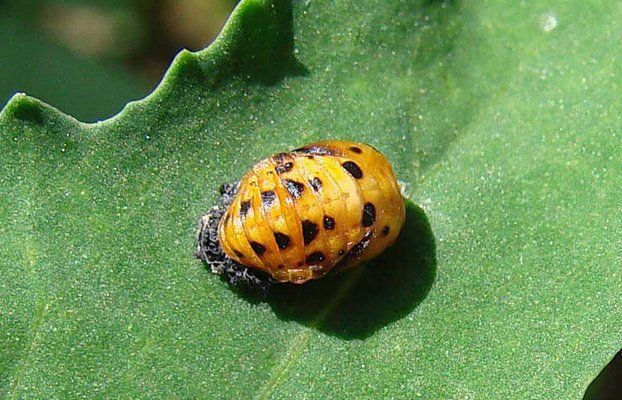
Important! The larva of this beetle does not have a very attractive appearance - it is a strange creature without wings and with bright dots on its back. If you see such a monster on your loved ones or - do not rush to destroy it, soon this larva will turn into a cute colorful bug.
What are the benefits
The benefits that a ladybug brings are visible to the naked eye, you just have to carefully look, for example, to the cucumber. The reverse side of the leaf is dotted with aphids actively sucking leaf juice.
If they are left alone, after four days the leaves will completely dry and the plant will die. But here the scarlet hunters begin their work, and the cucumber plantations per day will be cleared of. 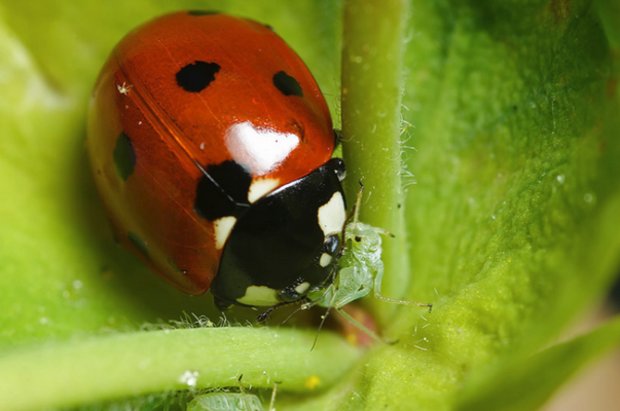 It is the presence of these carnivorous insects that solves the problems with the destruction of aphid colonies on berry bushes, fruit trees, and. The ability to do without chemical treatments will allow you to safely eat a ripe fruit crop and.
It is the presence of these carnivorous insects that solves the problems with the destruction of aphid colonies on berry bushes, fruit trees, and. The ability to do without chemical treatments will allow you to safely eat a ripe fruit crop and.
Some gardeners in the early spring, seeing small aphid colonies on some plants, immediately begin to resort to the destruction of their pesticides. You do not need to completely destroy aphids on plants, because adult ladybugs without food will die.
With the onset of autumn, it is not necessary to ideally clean the garden and the garden from fading plant debris, because in the absence of dry fallen leaves, empty birdhouses or heaps of brushwood left for the winter, ladybirds will nowhere to safely wait out the cold period.
Did you know? There is such a sign, portending a close luck in something: if a ladybug lands on your palm, then you can expect unexpected joy, good luck. In no case do they shake an insect that has arrived from their hands so as not to shake off luck, but wait until it flies out of their own free will.
Is there any harm
Although the benefits of the activity of beetles significantly exceed the harm they cause, it is still there. Not everything that ladybugs eat is good for the plant world.
Since the bug is a predatory and carnivorous insect, in addition to aphids, it can eat other insects useful for the garden.
There are several types of ladybugs that cause significant damage to cultural plantings:
Lives in hot countries (Africa, Asia, Turkmenistan, Azerbaijan). It is also ubiquitous in some European countries.
It deals great damage to the crop. Our climate is not suitable for gourds and ladybirds due to harsh winters.  - It is a true "scourge of God" for landings, and in the Amur Region, Khabarovsk Territory and on the Sakhalin Peninsula.
- It is a true "scourge of God" for landings, and in the Amur Region, Khabarovsk Territory and on the Sakhalin Peninsula.
In some places, such a bug is called a potato cow. This insect not only harms the crop, vegetables and, but also spreads viral diseases of plants when flying from field to field.  , or multicolor Asiatic - aggressive and gluttonous creatures, from this species of beetles in a panic farmers of North America, Western Europe and England. In 1988, these insects were brought to North America.
, or multicolor Asiatic - aggressive and gluttonous creatures, from this species of beetles in a panic farmers of North America, Western Europe and England. In 1988, these insects were brought to North America.
With their help, it was supposed to establish biocontrol over the excessively spread aphids. But this species destroys not only aphids, but also representatives of its own species and today has become the most common species in the United States and Great Britain.  The biologists of these countries are sounding the alarm - the remaining 46 species of cows, which were previously ubiquitous, have almost disappeared.
The biologists of these countries are sounding the alarm - the remaining 46 species of cows, which were previously ubiquitous, have almost disappeared.
Important! The gardener who wants to keep the population of these smart bugs on his territory needs to remember that any treatment of the garden will lead to the death of not only harmful insects. Pests after processing with pesticides quickly restore their numbers, but useful beetles multiply more slowly.
How to attract ladybugs
Attracting bugs to your garden or garden is not very simple, but possible. To do this, plant plants that attract this insect to settle on your territory.
Gardeners have long noticed that these bugs are lured to themselves by the smell of planting,.
Experienced gardeners leave beautiful beetles with comfortable places for wintering - if such shelters are prepared deliberately and in corners convenient for insects, then insects willingly stay in them for the winter.  A long-known trick:after harvesting, dry cleanings of corn heads are bundled and suspended in bouquets in the garden or on where the ladybugs feed.
A long-known trick:after harvesting, dry cleanings of corn heads are bundled and suspended in bouquets in the garden or on where the ladybugs feed.
In September, in search of a warm, dry and cozy shelter for wintering, insects eagerly cram in large numbers into corn brooms kindly provided to them.
The gardener can only collect at the end of September the “winter huts” covered with sitting bugs, transfer them to the barn and hang them from the ceiling beam. In spring, the beetles themselves will leave the winter shelter and scatter about their business.
These insects will remain in the summer in your garden and your garden. It must be remembered that even a dozen ladybugs will cause enormous damage to the aphid army.Even if the owner did not take care of collecting aphid hunters for the winter, they themselves will find shelter in the yard: in a log of wood, under the bark of old, under a pile of leaves or shavings.  All representatives of the insect of the world hide there and hibernate in a tight, friendly company. For our climate, it is important that such shelters are not high from the surface and in winter they are covered by snow, saving the beetles from freezing.
All representatives of the insect of the world hide there and hibernate in a tight, friendly company. For our climate, it is important that such shelters are not high from the surface and in winter they are covered by snow, saving the beetles from freezing.
In European countries, special garden "houses for ladybirds" are sold in stores for gardeners. Such small houses look like mailboxes or mini birdhouses.
Lodges for useful beetles are made from natural materials (, bamboo, plant debris, vine).
In summer, insects do not fly into such a house, since they do not need shelter in the warm period, and in order to lure them to the house and invite them to stay for the winter, people lay out a bait containing pheromones in these boxes.
Such a house is very decorative and decorates the garden, but at the same time it is arranged so that insects will not be covered with snow in winter and they will be able to survive the cold without loss.  “A cow, a ladybug, flying to the sky - your kids eat sweets there,” - which of the children in childhood, with a finger up, did not wait with a sinking heart when, after these words, the ladybug spread its wings and flew up ...
“A cow, a ladybug, flying to the sky - your kids eat sweets there,” - which of the children in childhood, with a finger up, did not wait with a sinking heart when, after these words, the ladybug spread its wings and flew up ...
This is a piece of childhood for every adult. Ladybug - a small summer bug with bright elegant color of wings, pure childhood joy and tireless assistant to the gardener in the fight against garden pests.
Gardeners should create comfortable living conditions for them and they will stay in our gardens for a long time - decorating them and saving them.
Was this article helpful?
Well no


